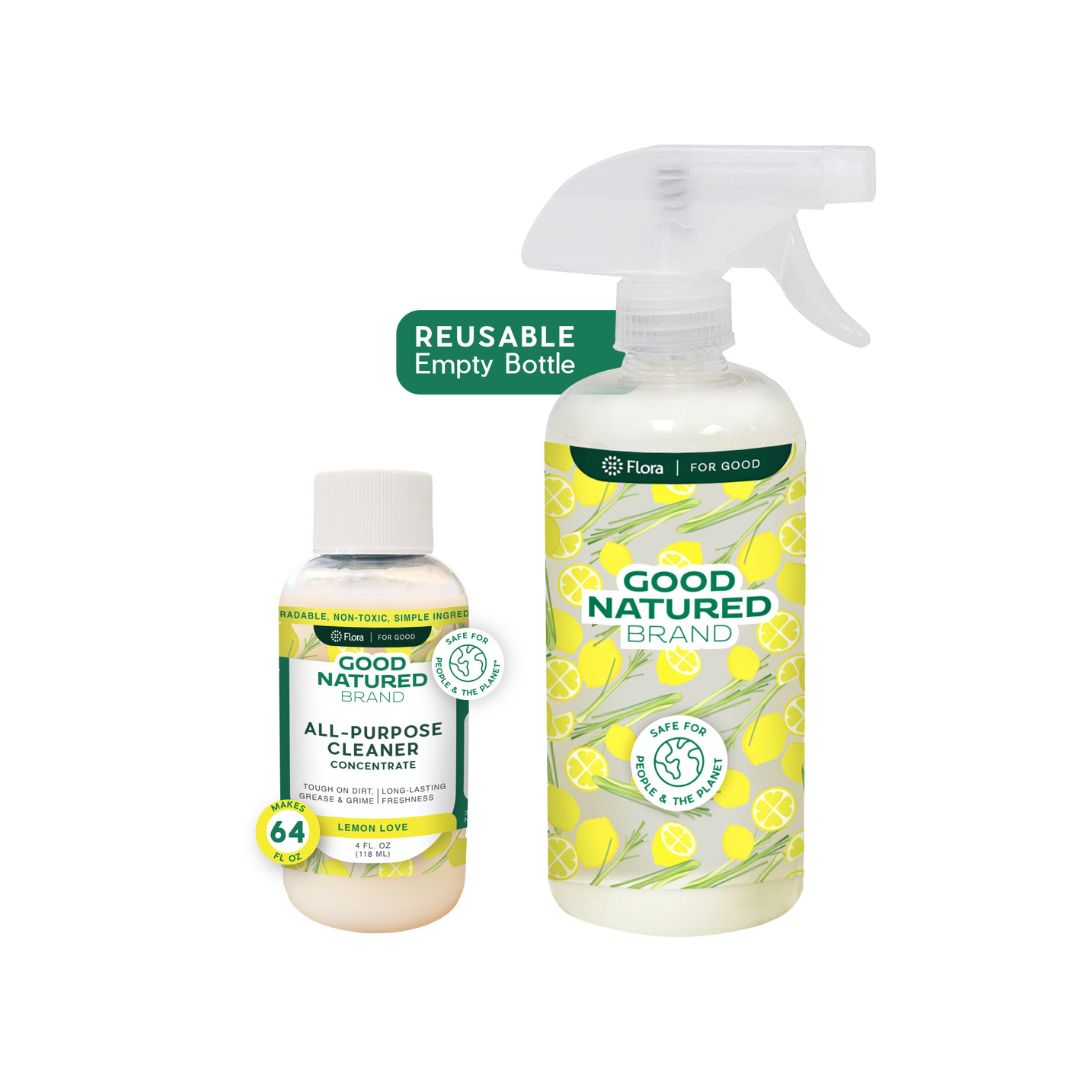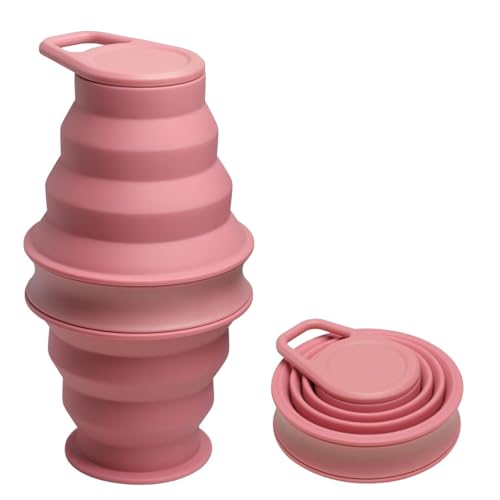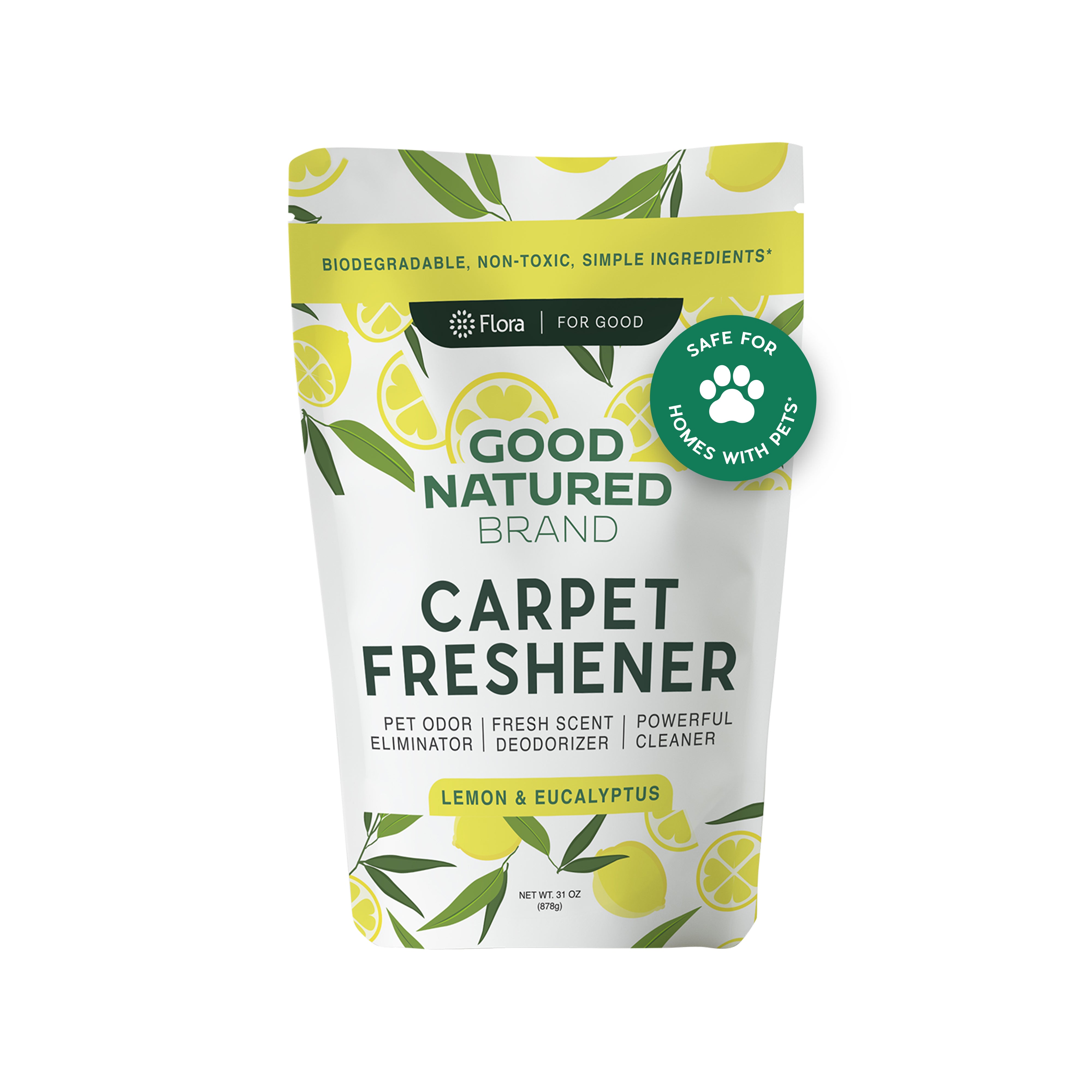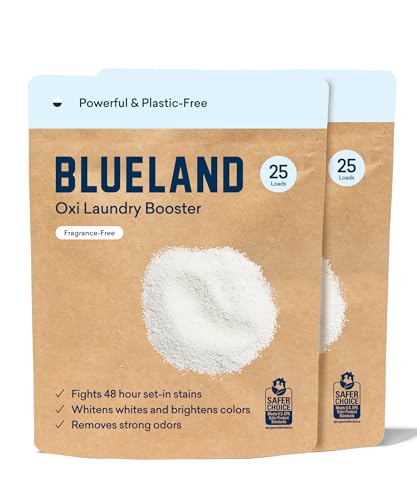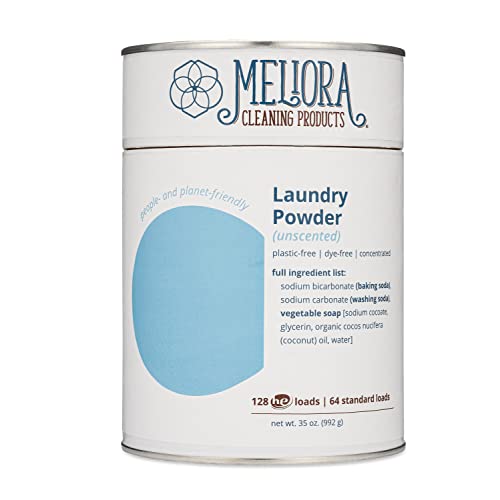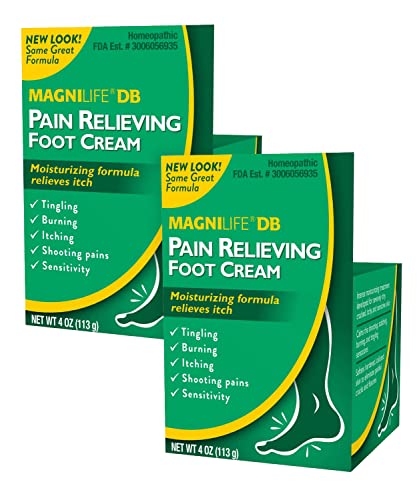
MagniLife Foot Cream - Calming Relief for Burning & Tingling Pain, Natural Ingredients - 2x4oz


Triethanolamine
High RiskTriethanolamine is a strongly alkaline substance commonly used in cosmetic and personal care products as an emulsifier, pH balancer, and surfactant. It helps to stabilize formulations by improving the mix of oil and water components, contributing to the overall texture and consistency of various products.
Sustai Insights
Triethanolamine serves effective functional benefits, particularly as an emulsifier and pH stabilizer, enhancing product performance. However, it is associated with moderate allergenic potential, and there are concerns regarding irritation. Regulatory agencies have imposed significant restrictions on its use due to safety assessments, categorizing it as high risk. The ingredient poses environmental risks, such as potential pollution, and is not considered biodegradable. Safe usage practices are recommended to minimize exposure. Safer alternatives such as glyceryl stearate may be considered for formulation innovation.
Imidazolidinyl Urea
High RiskImidazolidinyl urea is an antimicrobial preservative commonly used in cosmetic and personal care products. It functions by preventing the growth of bacteria and fungi, thereby extending the shelf life of products. This ingredient is often included in formulations that require preservation against microbial contamination.
Sustai Insights
Imidazolidinyl urea serves effectively as a preservative, ensuring product longevity. However, it has a high allergenic potential, raising concerns for sensitive individuals. Environmental risks include its classification as a potential pollutant, though it is not known to bioaccumulate significantly. Regulatory bodies do not impose major restrictions, but caution is advised due to its allergenic properties. Overall, the assessment indicates a high risk associated with its use, and consumers should consider safer alternatives when available.
Propylparaben
High RiskPropylparaben is a member of the paraben family of preservatives commonly used in cosmetics and personal care products. It helps to inhibit the growth of harmful bacteria and mold, extending the shelf life of products and ensuring their safety during use.
Sustai Insights
Propylparaben functions effectively as a preservative, preventing microbial growth and maintaining product integrity. However, it has been linked to moderate concerns regarding allergies, endocrine disruption, and potential reproductive toxicity. Regulatory agencies have imposed restrictions on its use due to these health risks. Additionally, propylparaben may pose environmental hazards, including potential bioaccumulation. Overall, the ingredient is assessed as high risk, warranting cautious usage and consideration of safer alternatives.
Camphor
High RiskCamphor is a waxy, scented substance derived from the wood of the camphor tree (Cinnamomum camphora). It is commonly used in topical applications for its aromatic properties and as a counterirritant. Camphor can also act as a preservative in various formulations.
Sustai Insights
Camphor offers functional benefits as a counterirritant and preservative, effectively providing relief from minor aches and pains. However, it has a high allergenic potential and can cause skin irritation. Regulatory bodies impose moderate restrictions on its use due to these concerns. Environmental risks include its potential as a pollutant, with a high risk assessment based on health impacts and usage restrictions. Safe usage practices are essential, and alternatives like menthol or eucalyptus oil may be safer options.
Citrus Aurantium Bergamia (Bergamot) Fruit Oil
High RiskCitrus aurantium bergamia (bergamot) fruit oil is a volatile oil extracted from the fruit of the bergamot orange. It is commonly used in various cosmetic and fragrance products for its aromatic properties.
Sustai Insights
Bergamot oil serves as a fragrant compound with potential benefits in aromatherapy and personal care formulations. However, it is associated with high allergenic potential, with risks of skin irritation and phototoxicity. Regulatory agencies have noted usage restrictions due to these concerns. While the oil is not classified as a carcinogen, it presents moderate risks overall. Caution is advised for sensitive populations, and safer alternatives like sweet orange oil may be considered.
Propylene Glycol
Medium RiskPropylene glycol is a small organic alcohol commonly used in cosmetics and personal care products as a humectant, solvent, and emulsifier. It helps retain moisture, enhances product texture, and aids in the delivery of active ingredients.
Sustai Insights
Propylene glycol serves vital functional benefits, including moisture retention and product stability. It is generally recognized as safe with low concerns for carcinogenicity and developmental toxicity. However, there may be moderate allergenic potential for some individuals. Environmentally, it poses minimal pollution risks and is not bioaccumulative. Regulatory bodies do not impose significant restrictions on its use. Overall, it presents a medium risk due to its allergenic potential and the need for cautious usage in sensitive populations.
Methylparaben
Medium RiskMethylparaben is a member of the paraben family, commonly used as a preservative in cosmetic and personal care products. It helps inhibit the growth of bacteria and fungi, thereby extending the shelf life of products.
Sustai Insights
Methylparaben serves effectively as a preservative, protecting products from microbial growth, and is generally considered safe at low concentrations. However, it has been associated with low to moderate risks of allergies and endocrine disruption. Regulatory bodies have imposed some restrictions on its use, but it is still considered low risk for carcinogenicity and developmental toxicity. Safe usage practices recommend adhering to established concentration thresholds, and alternatives like phenoxyethanol or ethylhexylglycerin could be considered for those seeking more sustainable options. Overall, the risk level associated with methylparaben is medium.
Tocopheryl Acetate
Medium RiskTocopheryl acetate is a chemical compound that serves primarily as a form of Vitamin E. It is used in cosmetic and personal care products for its antioxidant properties and to enhance skin stability and moisture.
Sustai Insights
Tocopheryl acetate is valued for its functional benefits, including acting as an antioxidant and skin conditioning agent. It is generally considered to have low carcinogenicity and reproductive toxicity risk, although it poses a moderate concern for allergies. Environmental risks are minimal, with no significant pollutant or bioaccumulation potential noted. Regulatory bodies have not imposed significant restrictions. Safe usage practices should be followed, particularly regarding enhanced skin absorption. Alternatives like natural Vitamin E may provide similar benefits with potentially lower allergenic properties. Overall, this ingredient presents a medium risk assessment.
Eucalyptus Globulus (Eucalyptus) Leaf Oil
Medium RiskEucalyptus globulus leaf oil is a volatile oil derived from the leaves of the eucalyptus tree, primarily used for its aromatic properties and as a potential antimicrobial agent in various products.
Sustai Insights
Eucalyptus globulus leaf oil offers functional benefits like fragrance and potential antimicrobial properties, supporting product efficacy. However, it presents high allergenic potential and moderate irritation concerns, which may pose health risks. Environmental risks include possible pollution and bioaccumulation. Regulatory restrictions are in place regarding its use in certain products. Overall, the risk level is medium, necessitating caution in usage and consideration of alternatives like tea tree oil or peppermint oil.
Carbomer
Low RiskCarbomer is a large polymeric chemical compound primarily used as a thickening agent in various cosmetic and personal care products. It enhances the texture and stability of formulations, making it effective in creams, gels, and lotions.
Sustai Insights
Carbomer serves as an effective thickening agent, improving product texture and stability. It is considered low-risk concerning health concerns such as carcinogenicity, allergenicity, and reproductive toxicity. While irritation may occur with skin or eye contact, the overall health and environmental risks are minimal. Regulatory bodies have not placed significant restrictions on carbomer, supporting its safety for use in formulations. Safe usage practices should be followed to minimize irritation potential. Alternatives like xanthan gum or guar gum may provide similar benefits with a natural profile. Overall, the ingredient is assessed as low risk.
Steareth 10
Low RiskSteareth-10 is a polyethylene glycol ether of stearyl alcohol, commonly used as an emulsifier and surfactant in various cosmetic and personal care products. It helps to blend oil and water-based ingredients, improving texture and stability.
Sustai Insights
Steareth-10 offers functional benefits as an effective emulsifier, enhancing product stability and texture. Health risks are minimal, with low concerns for carcinogenicity, allergies, and reproductive toxicity. Environmental risks are also low, with no significant pollutant or bioaccumulation concerns noted. Regulatory bodies do not impose severe restrictions. Overall, this ingredient is considered low risk, making it a suitable option for formulation, with safe usage practices advised. Alternatives may include other plant-based emulsifiers for those seeking sustainable options.
Glycol Cetearate
Low RiskGlycol cetearate is an ester of ethylene glycol and cetyl alcohol, commonly used as an emulsifier in cosmetic and personal care products. It helps to stabilize formulations by blending oil and water components, enhancing texture and consistency.
Sustai Insights
Glycol cetearate offers functional benefits as an effective emulsifier, improving product stability and user experience. It is generally considered safe with low risks of carcinogenicity, allergies, and developmental toxicity. Environmental assessments indicate it poses minimal ecological threats, with no significant bioaccumulation potential. Regulatory bodies currently do not impose restrictions. Therefore, the overall risk level is assessed as low, making it a suitable choice in formulation. For those seeking alternatives, other emulsifiers like sucrose stearate may provide similar benefits.
Stearic Acid
Low RiskStearic acid is a naturally occurring fatty acid commonly found in animal and vegetable fats. It functions primarily as an emulsifier, thickener, and stabilizer in cosmetic and personal care products, providing texture and consistency.
Sustai Insights
Stearic acid offers functional benefits such as effective emulsification and stabilization of formulations. It is derived from renewable sources and is biodegradable, contributing to its sustainability profile. Health risks are low, with minimal concerns regarding carcinogenicity, allergies, or reproductive toxicity. Environmental risks are also low, with no significant pollutants or bioaccumulation concerns noted. Regulatory bodies, including the FDA, do not impose restrictions on its use. Overall, stearic acid is assessed as low risk, and its safe usage practices are well-established, with no significant alternatives needed.
Peg 100
Low RiskPEG-100 is a polymer of ethylene oxide commonly used in cosmetic and personal care products as an emulsifier and thickening agent. It helps to stabilize formulations and improve texture, allowing for a smooth application on the skin.
Sustai Insights
PEG-100 offers functional benefits as an effective emulsifier, enhancing product stability and texture. It is generally considered to have low health risks, with minimal concerns regarding carcinogenicity, allergies, or reproductive toxicity. However, contamination concerns are noted, which necessitate careful sourcing. Environmental risks are low, but potential pollutants and bioaccumulation should be monitored. Regulatory bodies impose few restrictions, maintaining a low risk profile overall. Safe usage practices are advised, and alternatives such as naturally derived emulsifiers may provide more sustainable options.
Water
Low RiskWater is a clear, colorless liquid essential for various biological processes. It serves as a solvent in formulations, facilitating the dissolution of other ingredients and enhancing product texture and application. Additionally, water plays a crucial role in hydration and is a key component in many cosmetic and personal care products.
Sustai Insights
Water is an effective solvent and hydrator, contributing to the texture and efficacy of formulations. It is biodegradable and generally regarded as safe, with low concerns regarding carcinogenicity, allergies, and reproductive toxicity. However, excessive water usage can lead to environmental concerns, particularly regarding resource depletion. Regulatory bodies do not impose restrictions on water use in cosmetics. Overall, the risks associated with water are low, making it a safe and essential ingredient.
Beeswax, Yellow
Low RiskBeeswax, yellow, is a natural wax produced by honeybees, primarily composed of esters of fatty acids and long-chain alcohols. It serves as an emulsifier, thickener, and stabilizer in cosmetic formulations, contributing to texture and consistency. It is commonly used in creams, balms, and lip products.
Sustai Insights
Beeswax provides functional benefits such as enhancing product texture and acting as a natural emulsifier, while also being biodegradable and sustainably sourced. Health risks are minimal, with low concerns for carcinogenicity, allergies, or irritations. Environmental impacts are also low, as it does not bioaccumulate. Regulatory status remains favorable with no current restrictions. Overall, the ingredient poses low risk, making it a suitable choice in cosmetic formulations.
Coco Caprylate/Caprate
Low RiskCoco-caprylate/caprate is a mixture of esters derived from coconut oil, primarily used as an emollient and skin-conditioning agent in cosmetic formulations. It enhances the texture and spreadability of products, providing a silky feel on the skin without leaving a greasy residue.
Sustai Insights
Coco-caprylate/caprate serves effectively as an emollient, offering a silky texture to formulations while being biodegradable and sourced sustainably from coconut oil. Health risks are minimal, with low concerns regarding carcinogenicity, allergies, or reproductive toxicity. Environmental risks are also considered low, with no significant pollutant or bioaccumulation potential. Regulatory bodies have not imposed significant restrictions on its use, indicating a favorable safety profile. Overall, the ingredient is assessed to have a low risk, and safer alternatives are limited but may include other natural emollients.
Neomenthol
Low RiskNeomenthol is a menthol derivative commonly used for its cooling sensation in cosmetic and topical formulations. It acts primarily as a fragrance component and a soothing agent, contributing to the sensory attributes of products such as creams and ointments.
Sustai Insights
Neomenthol offers functional benefits, including its cooling effect and soothing properties in topical applications. It is not associated with significant health risks, as concerns regarding carcinogenicity, allergies, and toxicity are low. Environmentally, it poses minimal risks and is not classified as a pollutant. Regulatory status indicates no current restrictions. Overall, its risk level is assessed as low, making it a safe option for use in personal care products.
Cetyl Alcohol
Low RiskCetyl alcohol is a long-chain organic alcohol commonly used in cosmetic formulations. It serves as an emollient, emulsifier, and thickening agent, enhancing the texture and stability of products. Cetyl alcohol is derived from natural sources, such as coconut or palm oil, and is often included in creams, lotions, and hair conditioners.
Sustai Insights
Cetyl alcohol offers functional benefits as an emollient and emulsifier, improving product texture and stability. It is biodegradable and sourced from renewable materials, contributing to sustainability. Health risks are minimal, with low concerns for carcinogenicity, allergies, or reproductive toxicity. Environmental impact is also low, with no significant pollutant or bioaccumulation potential. Regulatory bodies have not placed restrictions on its use, indicating a favorable safety profile. Overall, cetyl alcohol is assessed as low risk, and safe usage practices include ensuring proper formulation concentrations.
Gaultheria Procumbens (Wintergreen) Oil
Low RiskGaultheria procumbens (wintergreen) oil is an essential oil derived from the leaves of the wintergreen plant. It is primarily used for its aromatic properties and as a natural flavoring agent. Its main component, methyl salicylate, is known for its analgesic and anti-inflammatory effects, making it popular in topical applications for muscle and joint relief.
Sustai Insights
Wintergreen oil offers functional benefits such as pain relief and flavoring, and it is typically sourced sustainably. Health risks are minimal, with low concerns for carcinogenicity, allergies, and reproductive toxicity. Environmental risks are also low, with no significant pollution or bioaccumulation noted. Regulatory bodies do not impose restrictions on its use. Overall, wintergreen oil presents a low-risk profile, making it a suitable ingredient in various products.
Triethanolamine
High RiskTriethanolamine is a strongly alkaline substance commonly used in cosmetic and personal care products as an emulsifier, pH balancer, and surfactant. It helps to stabilize formulations by improving the mix of oil and water components, contributing to the overall texture and consistency of various products.
Sustai Insights
Triethanolamine serves effective functional benefits, particularly as an emulsifier and pH stabilizer, enhancing product performance. However, it is associated with moderate allergenic potential, and there are concerns regarding irritation. Regulatory agencies have imposed significant restrictions on its use due to safety assessments, categorizing it as high risk. The ingredient poses environmental risks, such as potential pollution, and is not considered biodegradable. Safe usage practices are recommended to minimize exposure. Safer alternatives such as glyceryl stearate may be considered for formulation innovation.
Imidazolidinyl Urea
High RiskImidazolidinyl urea is an antimicrobial preservative commonly used in cosmetic and personal care products. It functions by preventing the growth of bacteria and fungi, thereby extending the shelf life of products. This ingredient is often included in formulations that require preservation against microbial contamination.
Sustai Insights
Imidazolidinyl urea serves effectively as a preservative, ensuring product longevity. However, it has a high allergenic potential, raising concerns for sensitive individuals. Environmental risks include its classification as a potential pollutant, though it is not known to bioaccumulate significantly. Regulatory bodies do not impose major restrictions, but caution is advised due to its allergenic properties. Overall, the assessment indicates a high risk associated with its use, and consumers should consider safer alternatives when available.
Carbomer
Low RiskCarbomer is a large polymeric chemical compound primarily used as a thickening agent in various cosmetic and personal care products. It enhances the texture and stability of formulations, making it effective in creams, gels, and lotions.
Sustai Insights
Carbomer serves as an effective thickening agent, improving product texture and stability. It is considered low-risk concerning health concerns such as carcinogenicity, allergenicity, and reproductive toxicity. While irritation may occur with skin or eye contact, the overall health and environmental risks are minimal. Regulatory bodies have not placed significant restrictions on carbomer, supporting its safety for use in formulations. Safe usage practices should be followed to minimize irritation potential. Alternatives like xanthan gum or guar gum may provide similar benefits with a natural profile. Overall, the ingredient is assessed as low risk.
Steareth 10
Low RiskSteareth-10 is a polyethylene glycol ether of stearyl alcohol, commonly used as an emulsifier and surfactant in various cosmetic and personal care products. It helps to blend oil and water-based ingredients, improving texture and stability.
Sustai Insights
Steareth-10 offers functional benefits as an effective emulsifier, enhancing product stability and texture. Health risks are minimal, with low concerns for carcinogenicity, allergies, and reproductive toxicity. Environmental risks are also low, with no significant pollutant or bioaccumulation concerns noted. Regulatory bodies do not impose severe restrictions. Overall, this ingredient is considered low risk, making it a suitable option for formulation, with safe usage practices advised. Alternatives may include other plant-based emulsifiers for those seeking sustainable options.
Glycol Cetearate
Low RiskGlycol cetearate is an ester of ethylene glycol and cetyl alcohol, commonly used as an emulsifier in cosmetic and personal care products. It helps to stabilize formulations by blending oil and water components, enhancing texture and consistency.
Sustai Insights
Glycol cetearate offers functional benefits as an effective emulsifier, improving product stability and user experience. It is generally considered safe with low risks of carcinogenicity, allergies, and developmental toxicity. Environmental assessments indicate it poses minimal ecological threats, with no significant bioaccumulation potential. Regulatory bodies currently do not impose restrictions. Therefore, the overall risk level is assessed as low, making it a suitable choice in formulation. For those seeking alternatives, other emulsifiers like sucrose stearate may provide similar benefits.
Stearic Acid
Low RiskStearic acid is a naturally occurring fatty acid commonly found in animal and vegetable fats. It functions primarily as an emulsifier, thickener, and stabilizer in cosmetic and personal care products, providing texture and consistency.
Sustai Insights
Stearic acid offers functional benefits such as effective emulsification and stabilization of formulations. It is derived from renewable sources and is biodegradable, contributing to its sustainability profile. Health risks are low, with minimal concerns regarding carcinogenicity, allergies, or reproductive toxicity. Environmental risks are also low, with no significant pollutants or bioaccumulation concerns noted. Regulatory bodies, including the FDA, do not impose restrictions on its use. Overall, stearic acid is assessed as low risk, and its safe usage practices are well-established, with no significant alternatives needed.
Peg 100
Low RiskPEG-100 is a polymer of ethylene oxide commonly used in cosmetic and personal care products as an emulsifier and thickening agent. It helps to stabilize formulations and improve texture, allowing for a smooth application on the skin.
Sustai Insights
PEG-100 offers functional benefits as an effective emulsifier, enhancing product stability and texture. It is generally considered to have low health risks, with minimal concerns regarding carcinogenicity, allergies, or reproductive toxicity. However, contamination concerns are noted, which necessitate careful sourcing. Environmental risks are low, but potential pollutants and bioaccumulation should be monitored. Regulatory bodies impose few restrictions, maintaining a low risk profile overall. Safe usage practices are advised, and alternatives such as naturally derived emulsifiers may provide more sustainable options.
Water
Low RiskWater is a clear, colorless liquid essential for various biological processes. It serves as a solvent in formulations, facilitating the dissolution of other ingredients and enhancing product texture and application. Additionally, water plays a crucial role in hydration and is a key component in many cosmetic and personal care products.
Sustai Insights
Water is an effective solvent and hydrator, contributing to the texture and efficacy of formulations. It is biodegradable and generally regarded as safe, with low concerns regarding carcinogenicity, allergies, and reproductive toxicity. However, excessive water usage can lead to environmental concerns, particularly regarding resource depletion. Regulatory bodies do not impose restrictions on water use in cosmetics. Overall, the risks associated with water are low, making it a safe and essential ingredient.
Beeswax, Yellow
Low RiskBeeswax, yellow, is a natural wax produced by honeybees, primarily composed of esters of fatty acids and long-chain alcohols. It serves as an emulsifier, thickener, and stabilizer in cosmetic formulations, contributing to texture and consistency. It is commonly used in creams, balms, and lip products.
Sustai Insights
Beeswax provides functional benefits such as enhancing product texture and acting as a natural emulsifier, while also being biodegradable and sustainably sourced. Health risks are minimal, with low concerns for carcinogenicity, allergies, or irritations. Environmental impacts are also low, as it does not bioaccumulate. Regulatory status remains favorable with no current restrictions. Overall, the ingredient poses low risk, making it a suitable choice in cosmetic formulations.
Propylparaben
High RiskPropylparaben is a member of the paraben family of preservatives commonly used in cosmetics and personal care products. It helps to inhibit the growth of harmful bacteria and mold, extending the shelf life of products and ensuring their safety during use.
Sustai Insights
Propylparaben functions effectively as a preservative, preventing microbial growth and maintaining product integrity. However, it has been linked to moderate concerns regarding allergies, endocrine disruption, and potential reproductive toxicity. Regulatory agencies have imposed restrictions on its use due to these health risks. Additionally, propylparaben may pose environmental hazards, including potential bioaccumulation. Overall, the ingredient is assessed as high risk, warranting cautious usage and consideration of safer alternatives.
Camphor
High RiskCamphor is a waxy, scented substance derived from the wood of the camphor tree (Cinnamomum camphora). It is commonly used in topical applications for its aromatic properties and as a counterirritant. Camphor can also act as a preservative in various formulations.
Sustai Insights
Camphor offers functional benefits as a counterirritant and preservative, effectively providing relief from minor aches and pains. However, it has a high allergenic potential and can cause skin irritation. Regulatory bodies impose moderate restrictions on its use due to these concerns. Environmental risks include its potential as a pollutant, with a high risk assessment based on health impacts and usage restrictions. Safe usage practices are essential, and alternatives like menthol or eucalyptus oil may be safer options.
Coco Caprylate/Caprate
Low RiskCoco-caprylate/caprate is a mixture of esters derived from coconut oil, primarily used as an emollient and skin-conditioning agent in cosmetic formulations. It enhances the texture and spreadability of products, providing a silky feel on the skin without leaving a greasy residue.
Sustai Insights
Coco-caprylate/caprate serves effectively as an emollient, offering a silky texture to formulations while being biodegradable and sourced sustainably from coconut oil. Health risks are minimal, with low concerns regarding carcinogenicity, allergies, or reproductive toxicity. Environmental risks are also considered low, with no significant pollutant or bioaccumulation potential. Regulatory bodies have not imposed significant restrictions on its use, indicating a favorable safety profile. Overall, the ingredient is assessed to have a low risk, and safer alternatives are limited but may include other natural emollients.
Neomenthol
Low RiskNeomenthol is a menthol derivative commonly used for its cooling sensation in cosmetic and topical formulations. It acts primarily as a fragrance component and a soothing agent, contributing to the sensory attributes of products such as creams and ointments.
Sustai Insights
Neomenthol offers functional benefits, including its cooling effect and soothing properties in topical applications. It is not associated with significant health risks, as concerns regarding carcinogenicity, allergies, and toxicity are low. Environmentally, it poses minimal risks and is not classified as a pollutant. Regulatory status indicates no current restrictions. Overall, its risk level is assessed as low, making it a safe option for use in personal care products.
Cetyl Alcohol
Low RiskCetyl alcohol is a long-chain organic alcohol commonly used in cosmetic formulations. It serves as an emollient, emulsifier, and thickening agent, enhancing the texture and stability of products. Cetyl alcohol is derived from natural sources, such as coconut or palm oil, and is often included in creams, lotions, and hair conditioners.
Sustai Insights
Cetyl alcohol offers functional benefits as an emollient and emulsifier, improving product texture and stability. It is biodegradable and sourced from renewable materials, contributing to sustainability. Health risks are minimal, with low concerns for carcinogenicity, allergies, or reproductive toxicity. Environmental impact is also low, with no significant pollutant or bioaccumulation potential. Regulatory bodies have not placed restrictions on its use, indicating a favorable safety profile. Overall, cetyl alcohol is assessed as low risk, and safe usage practices include ensuring proper formulation concentrations.
Citrus Aurantium Bergamia (Bergamot) Fruit Oil
High RiskCitrus aurantium bergamia (bergamot) fruit oil is a volatile oil extracted from the fruit of the bergamot orange. It is commonly used in various cosmetic and fragrance products for its aromatic properties.
Sustai Insights
Bergamot oil serves as a fragrant compound with potential benefits in aromatherapy and personal care formulations. However, it is associated with high allergenic potential, with risks of skin irritation and phototoxicity. Regulatory agencies have noted usage restrictions due to these concerns. While the oil is not classified as a carcinogen, it presents moderate risks overall. Caution is advised for sensitive populations, and safer alternatives like sweet orange oil may be considered.
Propylene Glycol
Medium RiskPropylene glycol is a small organic alcohol commonly used in cosmetics and personal care products as a humectant, solvent, and emulsifier. It helps retain moisture, enhances product texture, and aids in the delivery of active ingredients.
Sustai Insights
Propylene glycol serves vital functional benefits, including moisture retention and product stability. It is generally recognized as safe with low concerns for carcinogenicity and developmental toxicity. However, there may be moderate allergenic potential for some individuals. Environmentally, it poses minimal pollution risks and is not bioaccumulative. Regulatory bodies do not impose significant restrictions on its use. Overall, it presents a medium risk due to its allergenic potential and the need for cautious usage in sensitive populations.
Methylparaben
Medium RiskMethylparaben is a member of the paraben family, commonly used as a preservative in cosmetic and personal care products. It helps inhibit the growth of bacteria and fungi, thereby extending the shelf life of products.
Sustai Insights
Methylparaben serves effectively as a preservative, protecting products from microbial growth, and is generally considered safe at low concentrations. However, it has been associated with low to moderate risks of allergies and endocrine disruption. Regulatory bodies have imposed some restrictions on its use, but it is still considered low risk for carcinogenicity and developmental toxicity. Safe usage practices recommend adhering to established concentration thresholds, and alternatives like phenoxyethanol or ethylhexylglycerin could be considered for those seeking more sustainable options. Overall, the risk level associated with methylparaben is medium.
Tocopheryl Acetate
Medium RiskTocopheryl acetate is a chemical compound that serves primarily as a form of Vitamin E. It is used in cosmetic and personal care products for its antioxidant properties and to enhance skin stability and moisture.
Sustai Insights
Tocopheryl acetate is valued for its functional benefits, including acting as an antioxidant and skin conditioning agent. It is generally considered to have low carcinogenicity and reproductive toxicity risk, although it poses a moderate concern for allergies. Environmental risks are minimal, with no significant pollutant or bioaccumulation potential noted. Regulatory bodies have not imposed significant restrictions. Safe usage practices should be followed, particularly regarding enhanced skin absorption. Alternatives like natural Vitamin E may provide similar benefits with potentially lower allergenic properties. Overall, this ingredient presents a medium risk assessment.
Eucalyptus Globulus (Eucalyptus) Leaf Oil
Medium RiskEucalyptus globulus leaf oil is a volatile oil derived from the leaves of the eucalyptus tree, primarily used for its aromatic properties and as a potential antimicrobial agent in various products.
Sustai Insights
Eucalyptus globulus leaf oil offers functional benefits like fragrance and potential antimicrobial properties, supporting product efficacy. However, it presents high allergenic potential and moderate irritation concerns, which may pose health risks. Environmental risks include possible pollution and bioaccumulation. Regulatory restrictions are in place regarding its use in certain products. Overall, the risk level is medium, necessitating caution in usage and consideration of alternatives like tea tree oil or peppermint oil.
Gaultheria Procumbens (Wintergreen) Oil
Low RiskGaultheria procumbens (wintergreen) oil is an essential oil derived from the leaves of the wintergreen plant. It is primarily used for its aromatic properties and as a natural flavoring agent. Its main component, methyl salicylate, is known for its analgesic and anti-inflammatory effects, making it popular in topical applications for muscle and joint relief.
Sustai Insights
Wintergreen oil offers functional benefits such as pain relief and flavoring, and it is typically sourced sustainably. Health risks are minimal, with low concerns for carcinogenicity, allergies, and reproductive toxicity. Environmental risks are also low, with no significant pollution or bioaccumulation noted. Regulatory bodies do not impose restrictions on its use. Overall, wintergreen oil presents a low-risk profile, making it a suitable ingredient in various products.
Experience soothing relief with MagniLife DB Pain Relieving Foot Cream, a natural remedy designed to combat burning, tingling, and stabbing foot pain. This moisturizing cream is perfect for sensitive skin, ensuring hydration without harsh chemicals.
- Natural Pain Relief: Delivers quick support for discomfort while restoring severely dry and cracked skin, ideal after bathing or before bedtime.
- All-Natural Ingredients: Formulated with gelsemium, beeswax, and eucalyptus, this cream penetrates deeply to soothe and hydrate without a greasy residue.
- Safe for All Skin Types: Free from mineral oils, petroleum, and dyes, making it gentle enough for sensitive areas, including between toes.
- Non-Interfering Formula: Compatible with other medications, offering a safe option for those seeking relief without harsh side effects.
- Trusted Brand: Backed by over 20 years of experience, MagniLife is dedicated to quality, consistency, and improving your quality of life.
Subscribe & Save with Sustai
- Best Price Guarantee: Always enjoy the lowest prices on sustainable home essentials.
- No Surprises: We’ll notify you before shipping. No hidden fees, ever.
- You’re in Charge: Change, pause, or cancel your subscription anytime with ease.
- Eco-Friendly Deliveries: Our grouped shipments mean less packaging and lower emissions.
Join us on a sustainable journey. Special offers for a limited time! Prices and promotions may change.
Recommended Products
Experience soothing relief with MagniLife DB Pain Relieving Foot Cream, a natural remedy designed to combat burning, tingling, and stabbing foot pain. This moisturizing cream is perfect for sensitive skin, ensuring hydration without harsh chemicals.
- Natural Pain Relief: Delivers quick support for discomfort while restoring severely dry and cracked skin, ideal after bathing or before bedtime.
- All-Natural Ingredients: Formulated with gelsemium, beeswax, and eucalyptus, this cream penetrates deeply to soothe and hydrate without a greasy residue.
- Safe for All Skin Types: Free from mineral oils, petroleum, and dyes, making it gentle enough for sensitive areas, including between toes.
- Non-Interfering Formula: Compatible with other medications, offering a safe option for those seeking relief without harsh side effects.
- Trusted Brand: Backed by over 20 years of experience, MagniLife is dedicated to quality, consistency, and improving your quality of life.

You can have at most 2 Sustainable Steals products in your cart
Customer Reviews
Customers’ View
Customers appreciate the soothing effectiveness of this foot cream, highlighting its ability to relieve discomfort associated with pain, burning, and tingling sensations. Many users report significant pain relief and a notable cooling effect, making it a valuable addition to their nighttime routines for better sleep quality. The product's all-natural ingredients, including beeswax and eucalyptus, resonate with health-conscious consumers, as it is free from mineral oils and fragrances, ensuring it's safe for sensitive skin. However, opinions on value for money vary, with some finding it a bit pricey for the quantity. Overall, customers find this product beneficial for maintaining foot health while aligning with their eco-friendly and health-focused values.
AI-generated from the text of customer reviewsThis product is rated 4.4 of 5.0 stars.
It has received 5 reviews.
